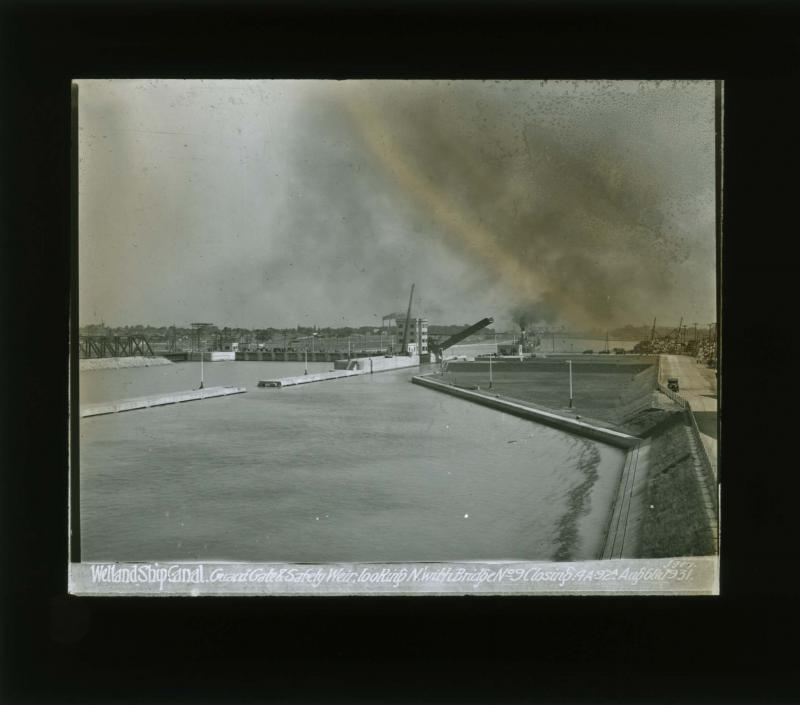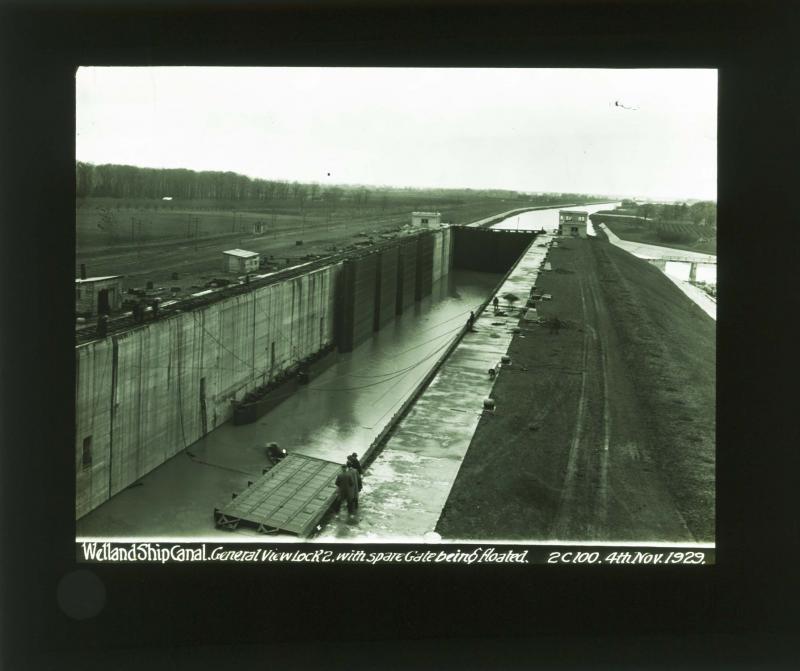Construction Accidents
Landslide
On October 20, 1928, crews were at work near the Ontario Paper Company in Thorold. They were preparing to build a dock for the use of the company. Although it was not formally part of the government's work on the canal, the company had hired the same contractor responsible for the construction of the canal in this area. The excavation work was close to completion when a sudden landslide occurred. Weeks of rain had saturated the clay and the layers at the bottom gave way. This "eruption" caused the collapse of the wall's upper layers, sending more than 2000 cubic yards of additional clay into the channel.
Just before the landslide, 14 men had been working in the channel. Some were lucky enough to have remained outside of the landslide's path, while others were pushed out and thrown clear instead of being buried. Eight men were rescued from the debris and suffered injuries including broken bones, cuts and bruises. But two unlucky men were killed, Joseph Dumoulin and Mike Koner. Dumoulin was pushed forward and crushed between the landslide and a dump car. Koner was badly injured and taken to hospital where he died the following day.
An official of the construction company noted after the accident that the landslide was quite unexpected since the walls of the channel were solid clay. He did acknowledge that the recent heavy rains had likely been a factor and noted that "It is another of those regrettable things which occur on large construction, and quite unavoidable".
Electrocution
On Jun 19, 1930, Sheldon Hansler, Edward Smith and Lloyd Tice were working with high tension wires near Bridge No. 9 in Thorold South. The three electricians were all employees of the Department of Railways and Canals. Their task was to relocate the wires from wooden poles to steel towers for the new Welland Ship Canal. As they were moving their ladder a sudden gust of wind pushed it backwards and it came directly in contact with a live high tension electrical switch at the Guard Gate substation. The three men were electrocuted. Valiant efforts were made to revive them but to no avail.
Although the ladder was made of wood, the sides were reinforced with a band of steel wire. This posed no problems most of the time, but was certainly a danger when working around electricity. This was a known issue, and quite coincidently was being discussed at a meeting of the Lincoln Electric Company in St. Catharines at the time the accident occurred. After the accident, the use of such ladders was discontinued on the Welland Canal.
Drowning and Shock
On February 17, 1928, Andrew Harkness was working on Lock 2 of the canal. He was employed as a bolt man for the Steel Gates Company. He was sent to the top of the lock wall on an errand. Instead of using a ladder, Harkness opted to use the tunnel in the lock wall as a faster alternative. After about 30 minutes the other workers noticed his absence and began searching for him. His cap was found floating on a water hole in the tunnel and his body was recovered with grappling irons. Although it is not known for certain what transpired, it is likely that the darkness of the tunnel made it difficult for Harkness to see, and that he accidentally fell into the large water hole. His death was initially ruled a drowning, but the coroner later determined that the cause of death was shock from the frigid water. Although Harkness' death was not considered a drowning, many men died by drowning during the construction of the Welland Ship Canal. Of the 138 men who died during construction, 23 drowned.


